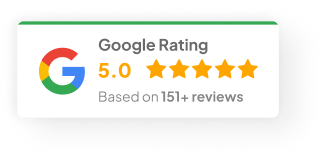03 Oct 25
Top Tips for Effective Web Design for Junk Removal Businesses
Junk removal is one of those industries where people don’t think about it until they need it right now. They’re moving, clearing out a garage, or dealing with renovation debris. They grab their phone, type “junk removal near me,” and whoever looks the most trustworthy and easiest to book gets the job.
That’s why the website matters. Not just how it looks, but how fast it loads, how simple it is to use, and how quickly it pushes someone to call or book.
Why Web Design is Critical Here
Most customers aren’t sitting on the decision for weeks. It’s a snap choice made under pressure. That means the site has to work harder, faster.
A solid website helps to:
- Build instant trust with a clean, professional look
- Show up for local searches like “trash hauling” or “junk pickup”
- Convert mobile visitors who expect a one-tap booking option
And the data backs it up. Around 62–64% of global web traffic comes from mobile devices. Plus, every extra second a page takes to load can drop conversions by up to 32%.
Web design is not just aesthetics. It’s revenue on the line.
1) Mobile First, Always
Most junk removal customers are searching from their phone, often while staring at the pile they want gone. So the site has to be built with mobile in mind.
Things that make a difference:
- Big buttons easy to tap
- “Click-to-call” always in sight
- Short, no-fuss forms
If the booking feels clumsy on mobile, people won’t finish it.
2) Speed Makes or Breaks It
Nobody waits for a slow site. Pages need to load in under three seconds. Slow speed hurts conversions and kills Google rankings.
Easy wins:
- Compress oversized images
- Cut back on unnecessary plugins
- Invest in solid hosting
The faster the site, the smoother the experience.
3) Clear Calls-to-Action
A junk removal website should never leave someone wondering what to do next. Buttons like “Schedule Pickup,” “Request a Quote,” or “Call Now” need to stand out.
Best practice? Put them at the top, repeat at the bottom, and make sure they use action-driven words.
4) Local SEO is Non-Negotiable
Junk removal is local. If the site doesn’t clearly show service areas, it’s leaving money on the table.
- Create service-area pages (e.g., “Junk Removal in Dallas”)
- Add a Google Map to the contact page
- Keep the business name, address, and phone consistent across directories
That’s what gets businesses into Google’s local “map pack,” where the bulk of clicks happen.
5) Show the Work: Photos and Reviews
Nothing proves credibility like real before-and-after photos. Customers want to see the kind of jobs handled before they call.
Pair those with reviews and testimonials. BrightLocal reports 87% of people read reviews for local businesses. That number is only climbing. Trust signals like these often decide who wins the booking.
6) Clean, Straightforward Design
The website should reflect the service: clear, reliable, no clutter. Avoid confusing menus or walls of text.
Some trust builders worth showing:
- Licenses and insurance
- Satisfaction guarantees
- Easy-to-read service details
A simple layout makes people feel like they’re in good hands.
7) Navigation Should Be Frictionless
The essentials should be one click away. That usually means:
- Services
- Pricing or how quotes work
- Contact options
- Service areas
No digging. No confusion.
8) Keep Tweaking Based on Data
Even a good site needs ongoing refinement. Tools like Google Analytics or Hotjar show where people drop off.
If a form isn’t working, shorten it. If a button isn’t being clicked, change the wording. Sometimes something as small as swapping “Submit” for “Get Estimate” bumps conversions.
Features That Boost Conversions
A few extras can push hesitant visitors into action:
- Instant quote calculators
- Live chat for common questions (“Do you take mattresses?”)
- Sticky CTAs that stay visible while scrolling
All about making it easier to say yes.
Why WordPress Fits Best
Plenty of platforms exist — Wix, Squarespace, Shopify. But WordPress usually edges them out for junk removal businesses.
- Flexibility with thousands of themes and plugins
- Full ownership and control over the site
- Easy to scale as the business grows
- Dominates the market, powering 43% of websites and 61% of CMS use (Hostinger)
The tradeoff is it needs proper setup and maintenance. Left unchecked, it can slow down or get messy.
Where Chromatix Steps In
This is where Chromatix shines. The team builds WordPress websites designed not just to look sharp, but to bring in leads.
- Conversion-focused layouts
- Optimised for speed and mobile use
- SEO and local visibility baked in
- Trust elements built naturally into the design
They’ve been doing it for years, and they’ve built a reputation for creating sites that actually convert, not just sit online looking pretty.
Final Thoughts
For junk removal companies, the website is often the first — and only — chance to make a good impression. A fast, mobile-friendly, cleanly designed site with strong CTAs and local SEO can turn visitors into paying customers.
WordPress is still the most flexible choice for long-term growth. And with the right partner, like Chromatix, a website can become a genuine sales machine.


